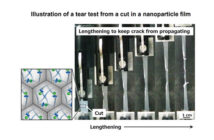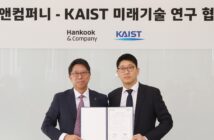A team of engineers from the Royal Melbourne Institute of Technology (RMIT) University in Australia have managed to replace 100% of the traditionally used aggregates in concrete with rubber from end-of-life tires, while still continuing to meet building regulations.
By replacing gravel and crushed rocks, the team members believe the more sustainable and lighter concrete will enable a reduction in manufacturing and transportation costs, in addition to contributing to a circular economy.
Until now, small amounts of recycled tires have already been utilized to replace concrete aggregates but attempts to replace 100% of the materials have resulted in weak concrete mixes that do not meet building standards.
The recent study – published in the journal Resources, Conservation & Recycling – outlines a manufacturing process for structural lightweight concrete where conventional coarse aggregates in the mix were completely replaced by rubber from end-of-life passenger car tires.
“We have demonstrated with our precise casting method that this decades-old perceived limitation on using large amounts of coarse rubber particles in concrete can now be overcome,” said Mohammad Momeen Ul Islam, lead author and PhD researcher at RMIT University’s School of Engineering. “The technique involves using newly designed casting molds to compress the coarse rubber aggregate in fresh concrete that enhances the building material’s performance.”
The recently devised process builds on the previous invention of a technique by other RMIT University Engineers Professor Yufei Wu, Dr Syed Kazmi, Dr Muhammad Munir and Shenzhen University’s Professor Yingwu Zhou. Several national phase patent applications have been filed to protect the technology.
“As a major portion of typical concrete is coarse aggregate, replacing all of this with used tire rubber can significantly reduce the consumption of natural resources and also address the major environmental challenge of what to do with used tires,” said Professor Jie Li, study co-author and team leader, RMIT.
One of the team’s members believes the new manufacturing process could be scaled up in a cost-effective manner within a precast concrete industrial setting in Australia and overseas. Having conducted successful testing in a workshop environment, the team is now investigating the reinforcement of the concrete to evaluate how it can work in structural elements.
The research named Design and strength optimization method for the production of structural lightweight concrete: An experimental investigation for the complete replacement of conventional coarse aggregates by waste rubber particles is published in the Resources, Conservation & Recycling journal (DOI: 10.1016/j.resconrec.2022.106390).




